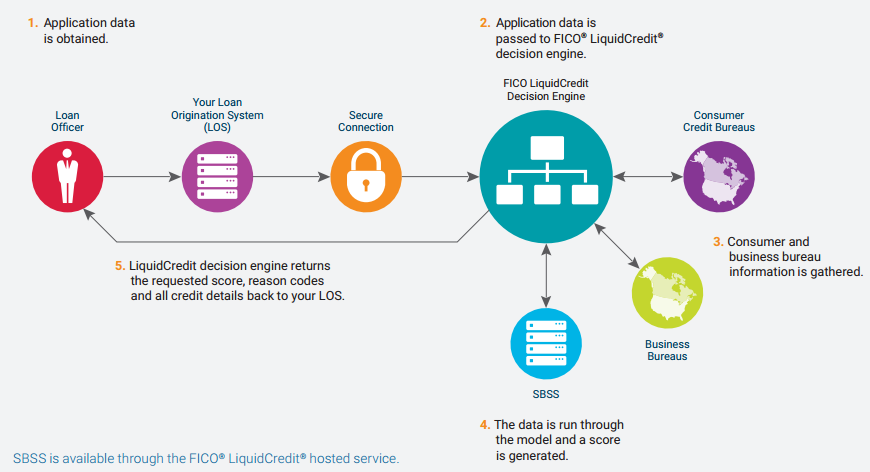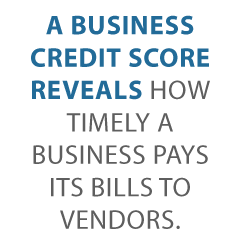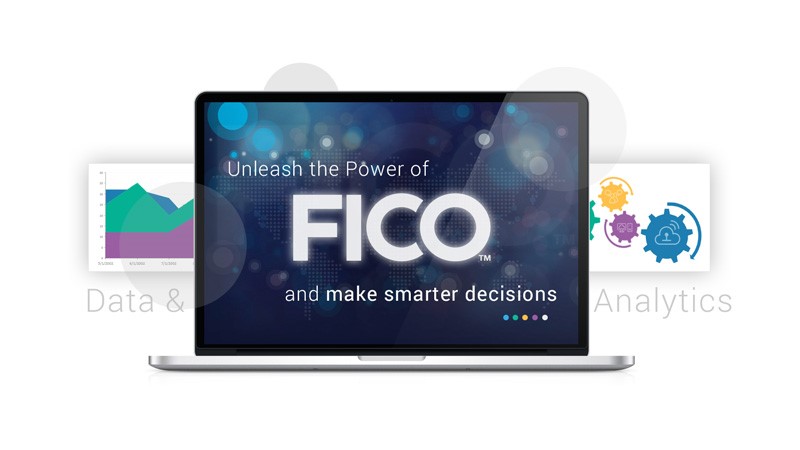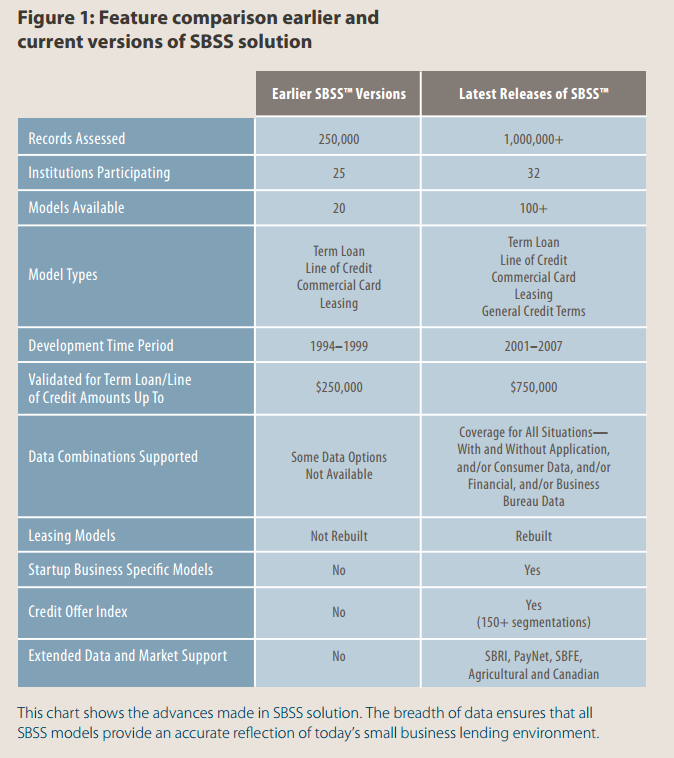- Connect With Us!
- (877) 600-2487
- info@creditsuite.com
5 Things You Should Know About Your FICO Small Business Score (SBSS)
Published By Credit Suite at December 30th, 2015
Your FICO Small Business Score is an Important Number
The FICO Small Business score is a measure of your small business’s credit worthiness. SBSS actually stands for Small Business Scoring Service. And it is on offer from FICO. They are well known in the consumer scoring industry. This score is becoming very popular with the lenders. This score is also now in wide used by the SBA to qualify business loans.
It comes from your personal and your business credit history and not just your business as the main business scores do now.
What Does FICO Say?
From FICO … “FICO® Small Business Scoring Service (SBSS) is recognized as the industry leader in assessing the risk of US small business credit applicants. SBSS is delivered via our LiquidCredit(r) infrastructure and brings the speed of consumer lending to your small business lending decisions. With SBSS, you can make decisions in hours, not days, improving customer satisfaction and helping you attract more small businesses. This service helps you say “yes” to the right applicants faster, and build a healthy portfolio of commercial accounts.”
SBSS History
The SBSS was actually launched all the way back in 1993. Since SBA started using it to evaluate all 7(a) loans under $350,000 in 2014, it has now become even more popular. SBA’s loan guaranty processing center has already been using the SBSS score for a number of years. And SBA also began using the minimum credit score control as part of the Small Loan Advantage Pilot in June of 2012. Lenders are already denying applicants due to low SBSS scores.
How Does the SBSS Figure the FICO Small Business Score
The process for requesting and delivering this score has five distinct steps. First, SBSS gathers application information. Then that data goes to FICO LiquidCredit decision engine. SBSS then gathers consumer and business bureau info for that applicant.
The SBSS then runs the data through the SBSS model and it generates a score. This returns the score, reason codes, and all credit details.

As this score grows in popularity, it becomes even more essential that you know as much as possible about it. So you can control it and your business’s financial future. This score is also now the main score the SBA looks at to determine loan approval especially for their most popular 7(a) loans.
Here are 5 things you should know about your FICO SBSS Score.
#1 Calculating Your FICO SBSS Score
Your FICO SBSS scores reflect the likelihood of the applicant paying their bills timely. Scores range from 0-300.
Higher scores mean lower risk, so the higher score you have the better. Personal and business credit history as well as financial data are used for the total score calculation.
As of 2014, all SBA 7(a) loans must go through a business credit score pre-screen. For SBA loans, you won’t be approved with a score below 140.
But they typically set the cutoff as high as 160. Below that, you’ll probably be denied because of being too high a risk. Actually, chances are the SBA lender won’t even submit your application to SBA if your score doesn’t meet this threshold.
Most lenders will accept scores over 160 or 180 to lend under $1 million. A lower score can qualify you for a smaller loan though.
Many factors are taken into account to calculate the FICO SBSS score, some include: the owner or co-owner’s personal credit information, business credit history, age of business, years in business, and financial data including assets.
FICO SBSS Score Formula:
- Cash flow
- Revenue
- The last 12 months of PAYDEX scores from D&B
- Liens
- Judgments
- Any other known financial data
If you have no business credit history and limited time in business, the highest possible FICO SBSS score you can get is 140. But even to get that high of a score you’d have to have pristine personal credit if you have no established business credit.
#2 Different Types of SBSS Models Lenders Use
The FICO SBSS score offers specific market-specific models for enhanced decision making.
One model is an agricultural lending and leasing model. Another model is in specific use in Canada. And the SBSS score insights provide support for D&B’s Small Business Risk Insight (SBRI) and the Small Business Financial Exchange (SBFE).
SBSS models are validated for term loans, lines of credit, and commercial cards all the way up to $1 million.
This helps credit issuers making evaluations for larger transactions. If you are applying for bank financing of $1 million or below, chances are good that they are checking your SBSS score.
#3 How Lenders Choose What Data Goes Into Your Score
SBSS gives small business credit issuers different combinations of data to evaluate the risk of a business.
For example, a credit issuer can choose to only evaluate the application data of the principle owner. Or they can choose to also include data from one or more of the business bureaus. Or they can choose to weigh one aspect higher than another.
This is a highly intelligent score. That is because it automatically goes from one business bureau to another in whatever order or priority the credit issuer chooses to generate a score. So if a lender prefers the D&B Paydex score as the default, the SBSS pulls that data set.
If there isn’t enough info to generate a score, it then automatically checks another business score such as the Experian Intelliscore, or it can even move on to the Equifax commercial data.
If there isn’t any or not enough business bureau data reporting, the SBSS will then just use the personal data of the business owner along with known or supplied financial data.
Due to the data combination methodology, the SBSS has become popular for credit issuers to now assess lending for startup businesses. That has been hard in the past.

#4 How the SBSS Credit Offer Index Works… and Why You Should Care
One aspect of the FICO SBSS credit score for small business is the Credit Offer Index.
The SBSS Credit Offer Index is meant to help credit issuers know what amount to lend, or the capacity of the applicant. It’s a benchmark against what businesses of similar profiles have requested in the past.
The SBSS Credit Offer Index comes from of application data, known financial info, consumer credit bureau data, and business bureau data.
It returns a percentile ranking of the current request. So this is versus other small businesses of similar providers as well as the amount of money on request from those businesses.
Lenders and credit provider can use this whether financial data came in as part of the application process. Or even if it did not. Credit issuers can use this to see if the amount on request is in line with industry experiences for that type of small business.
#5 How the SBSS Has Currently Been Updated
The SBSS score has gotten an update recently from its original version.

Many lending institutions use the SBSS score. They include KeyBank, Huntington National Bank, PNC, RBC, USBank, Ziobns Bank, HSBC, Santander Bank, and SBA.
Make sure you have a business credit profile established and that you are paying your business obligations on time.
How to Raise Your FICO Small Business Score
Business credit is the easiest to control, so this step is the fastest and easiest way to control your SBSS.
You also should work on repairing any damage to your consumer report. And load it up with good credit accounts to offset any bad ones. Report good financial data.
For more details on the FICO SBSS score check out this 38-minute video.

 " class="attachment-blog-single size-blog-single wp-post-image" alt="Get Business Credit Cards for New Businesses Credit Suite-Business Line of Credit Decoded" title="Get Business Credit Cards for New Businesses">>
" class="attachment-blog-single size-blog-single wp-post-image" alt="Get Business Credit Cards for New Businesses Credit Suite-Business Line of Credit Decoded" title="Get Business Credit Cards for New Businesses">>